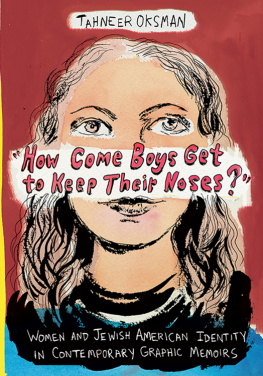How Strong Is That Nose?
Did you know that an elephant can use its trunk to pick up tree branches? Or that polar bears have the best sense of smell of any animal on Earth? Learn all about how animals use their noses to hunt, breathe, and stay safe.
"Readers of all agesbut especially early readerswill find these fact-filled books fascinating!"
Allan A. De Fina, PhD, Series Literacy Consultant
Dean, College of Education
Professor of Literacy Education
New Jersey City University
Past President of the New Jersey Reading Association
"From the end of the nose to the tip of the tail and many stops in between, this series introduces young readers to a variety of interesting details among a diversity of organisms."
Helen Hess, PhD, Science Consultant
Professor of Biology
College of the Atlantic
Bar Harbor, Maine
About the Author
Trained as both a scientist and journalist, Melissa Stewart is the award-winning author of more than 100 books for young readers. While gathering information for her books, Melissa has explored tropical forests in Costa Rica, gone on safari in Kenya and Tanzania, and swum with sea lions in the Galpagos Islands.


Image Credit: 2011 Photos.com, a division of Getty Images
blowholes (BLOH holhz)The holes, or nostrils, on top of a whales head. Whales breathe through the holes.
breathe (BREETH)To take air in and let it out of the lungs.

Image Credit: BananaStock/Thinkstock
nostrils (NAH struhlz)The two openings of the nose.
oxygen (AHK suh jen)A gas that has no color or smell. Living things need it to live.

Image Credit: Dwight Kuhn
tentacles (TEN tuh kuhlz)Thin, flexible structures that some animals use to feel.

Image Credit: Tui De Roy
Noses help animals in many ways. They smell and breathe and much, much more.
An anteaters nose can smell forty times better than your nose. Its perfect for tracking down ants and termites.
When an anteater chows down, it shuts its nose tight. That way insects cant crawl into its nostrils.

Image Credit: Tui De Roy

Image Credit: Minden Pictures: Flip Nicklin
This whale has two nostrils on top of its head. They are called blowholes. They let the whale breathe without lifting its head out of the water.

Image Credit: Minden Pictures: Flip Nicklin

Image Credit: David Parsons
A polar bear has the best sense of smell on Earth. It uses its nose to hunt. It can sniff a dead seal from 20 miles (32 kilometers) away.

Image Credit: Shutterstock.com

Image Credit: iStockphoto.com: Adrian Assalve
An elephants trunk does more than just smell. It can grab food or rub an itchy eye. It can lift a branch or pick a flower. It can toot like a horn. And it can squirt water like a hose. What a nifty nose!

Image Credit: Shutterstock.com

Image Credit: Robert and Jean Pollock
Each spring, these fish leave the ocean. They swim into rivers and streams. Then they mate and lay eggs in the same place where they hatched. How do the fish find just the right spot? They sniff it out.

Image Credit: Alaska Stock / Alamy

Image Credit: SA Team
This bats nose helps it hunt flying insects. Its nose sends out high, squeaky sounds. When the sounds hit an insect, they bounce back. The echoes tell the bat where the insect is.

Image Credit: Photo Researchers, Inc.: Dr. Merlin D. Tuttle/Bat Conservation International

Image Credit: Dwight Kuhn
Look at this moles nose! It has twenty-two pink tentacles. As the mole digs through the ground, its nose feels for worms and other food.

Image Credit: Rod Planck

Image Credit: kgfoto
You are an animal, too. Your nose takes air inand lets it outabout seventeen thousand times a day. You use the oxygen in air to live, move, and grow.
Your nose tells you when cookies are baking. And it warns you when milk is sour.

Image Credit: Marshall Bruce (petrel), Nina Shannon,
Match the answer to the question. Each answer is used only once. Look at the pictures for clues. Write your answers on a piece of paper.







































